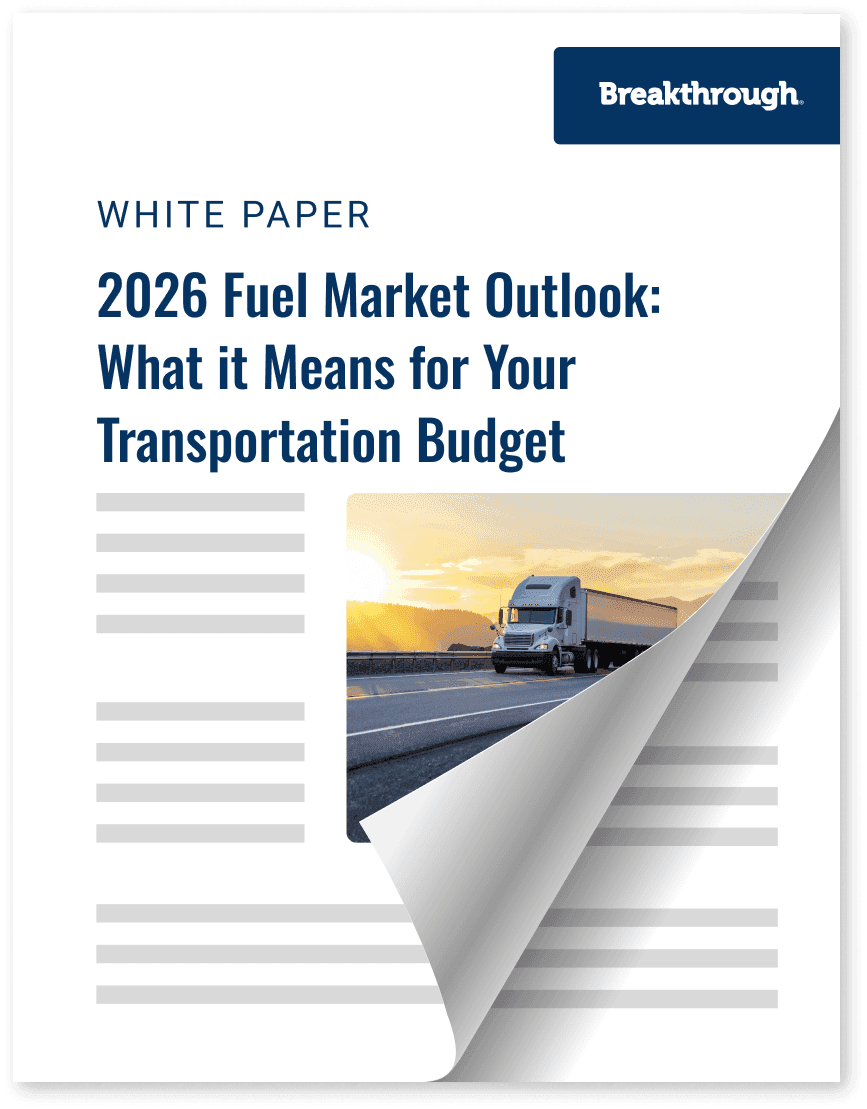2026 Fuel Market Outlook: What it Means for Your Transportation Budget

Trending
Top Posts
5 min read
April 6, 2020

Share:
Table of contents
Browse the table of contents to jump straight to the part you’re looking for
COVID-19’s blow to demand and excess supply from the removal of OPEC+ oil production constraints has seemingly settled in as the energy market’s new normal. Oil companies’ resulting dissatisfaction with low prices and the ensuing hit on the U.S. energy sector pressured President Trump to intervene in the Russia-Saudi Arabia price war last week. This move helped WTI prices rally from $20.09 to $28.34 per barrel between March 30 and April 3. Wholesale diesel prices decreased from $1.79 to $1.71 per gallon over that same period.
President Trump’s tweet on April 2 confirmed U.S. officials had spoken with Saudi Arabia’s Crown Prince regarding the enforcement of a joint 10 million barrel per day oil production cut with Russia. The announcement boosted WTI prices by $5.01 per barrel to close at $25.32 on April 2. Intra-day prices lost steam as Russia denied involvement, but were soon lifted as China released plans to replenish its strategic oil reserves and Saudi Arabia agreed to cuts if other G20 economies participated. The 25 percent increase marked WTI’s largest one-day jump on record. National average wholesale diesel prices jumped $0.06 per gallon in response to the oil market news.

Saudi Arabia and Russia then pressured the U.S. to join their efforts of balancing the oil market amid COVID-19’s demand destruction. U.S. oil executives met with President Trump on April 3 to discuss the possibility of a collaborative strategy with the OPEC+ accord. The meeting ended with the country’s free market ideals complicating whether the U.S. oil industry should or could formally contribute, ultimately preventing the formulation of firm production quotas. Saudi-Russia tensions have since escalated as leaders pass blame for exacerbating crude oil’s price collapse. This war of words adds another layer of uncertainty to the supply outlook, as does Saudi and Russia’s refusal to cut production unless U.S. producers do the same.
The OPEC+ alliance, the U.S., Canada, Brazil, and others were supposed to hold a virtual emergency meeting on April 6 to discuss a new oil production course. Recent developments, however, have tentatively postponed that meeting until April 9. Much of the news’ price impact hinges on whether production cuts are agreed upon and their ability to counter COVID-19’s market influence. Many believe the proposed cuts will not be enough to offset the demand loss from the pandemic. Shifting sentiment and potential U.S. energy policy adjustments, however, could offer short-term crude oil and diesel price support.

U.S. average wholesale diesel prices decreased to about $1.78 per gallon since last week’s Advisor Pulse, remaining at multi-year lows. Spreads contracted due to a relatively significant downward adjustment to the DOE retail index, but remain above $0.80 per gallon. National spreads have now averaged over this mark each day since March 9.
The COVID-19 outbreak continues to disrupt transportation supply chains. The nature of its disruption is evolving in North America.
The lull in Chinese manufacturing extended well past the Chinese New Year celebration this year thanks to the COVID-19 outbreak that began in Wuhan, China. China’s outbound ocean container capacity plummeted for weeks as its manufacturing faced country-wide shutdowns. This trend is highlighted in the chart below.

China’s outbound capacity rebounded in the second half of March. This led to a rebound in U.S. West Coast port volumes approximately 20 days later (see vessel capacity chart below). Accounting for transit time, the steady improvement in China’s outbound port volumes will likely see U.S.-inbound volumes sustained in April.

Source: Bloomberg Terminal Function BMAP, Data Retrieved 4/3/2020
The growing number of container line announcements of canceled sailings and suspensions of service by later April suggest the rebound will be short-lived.
The coming slump in container capacity and imports is a consequence of slowing sales and growing inventories of durable goods. U.S. demand for non-durable goods will be sustained longer but will see growing downside pressure should the labor market deteriorate for an extended time period. The Breakthrough Network has demonstrated these market changes. Durable goods shipments have decreased considerably year-over-year, while non-durable goods movements have been robust through consumer stockpiling.
Regarding transportation supply chains, the impact of COVID-19 is thus evolving from a supply-side to a demand-side shock.
For all coverage related to fuel and freight management in the face of COVID-19, visit our page.

6 min read
November 20, 2025
Understand the impact of Ukrainian drone strikes on Russian refineries. Learn why diesel prices are volatile and how to protect your budget from market shocks.
Read more
7 min read
November 11, 2025
Discover how fuel management systems cut costs, track emissions, and improve reimbursement accuracy for modern freight operations.
Read more
6 min read
November 10, 2025
Explore how the proposed Union Pacific–Norfolk Southern merger could reshape rail in the U.S. Learn impacts on competition, pricing, and service.
Read more